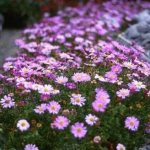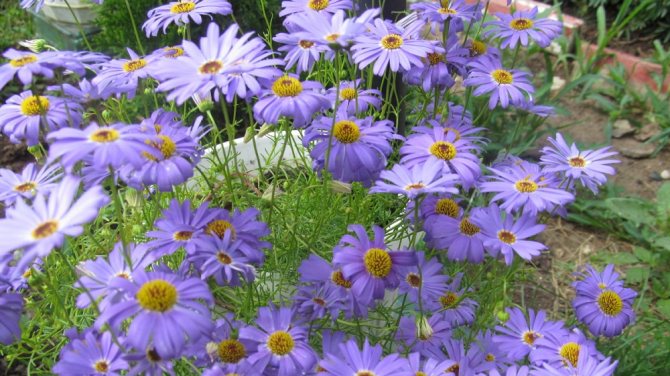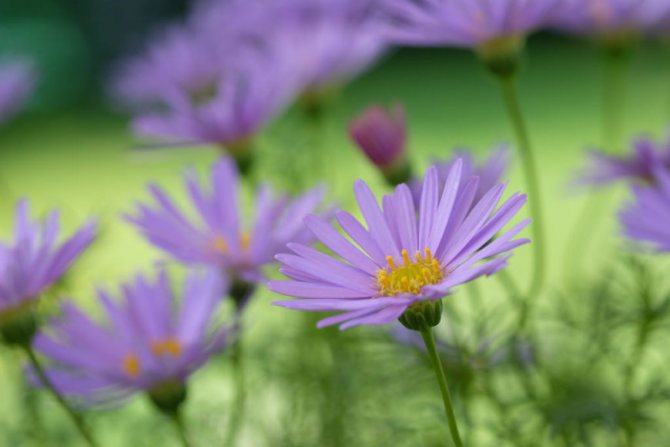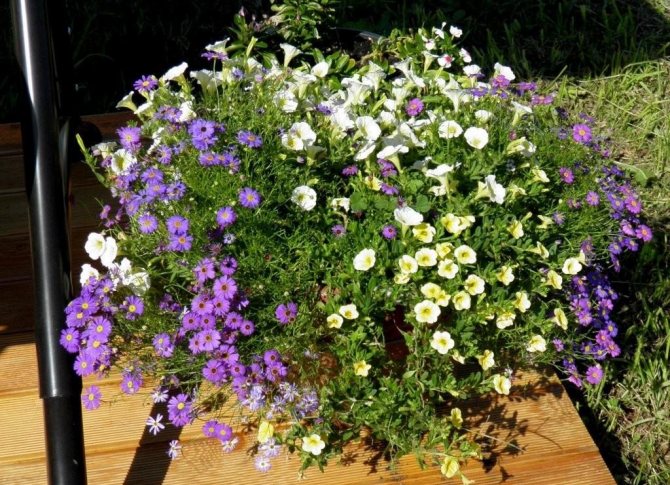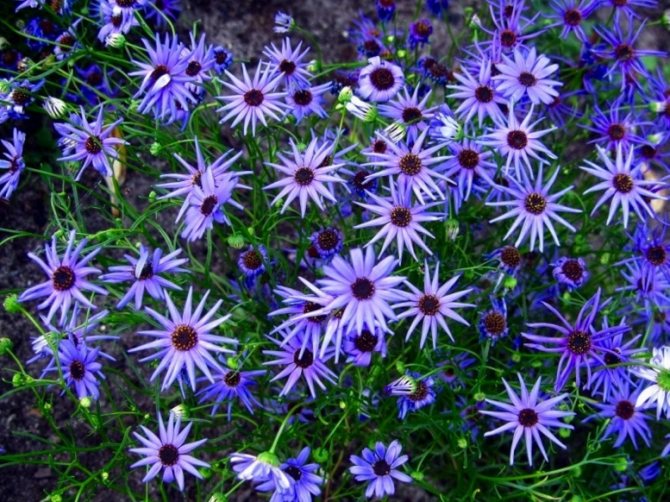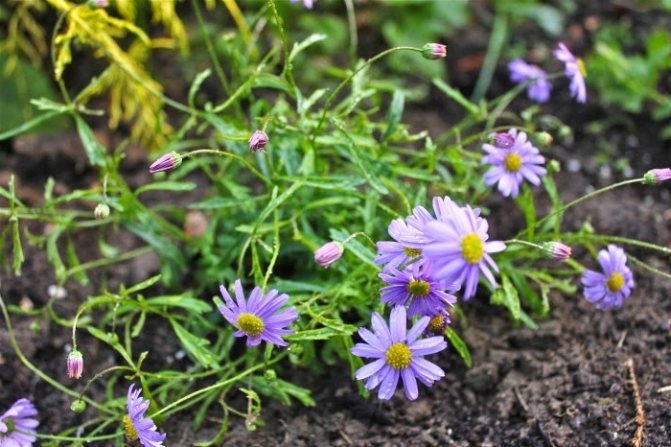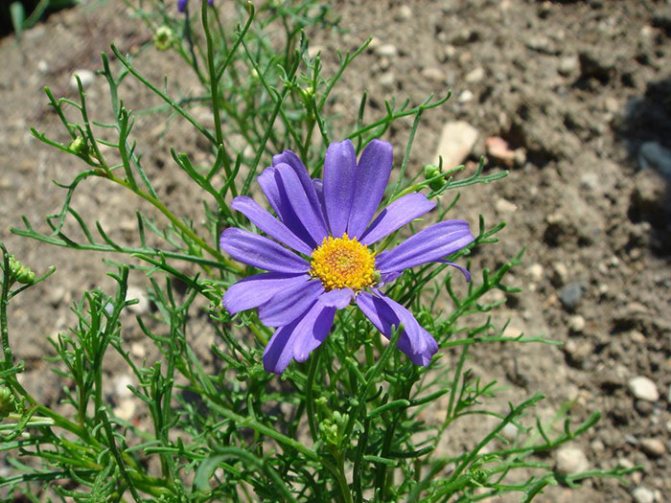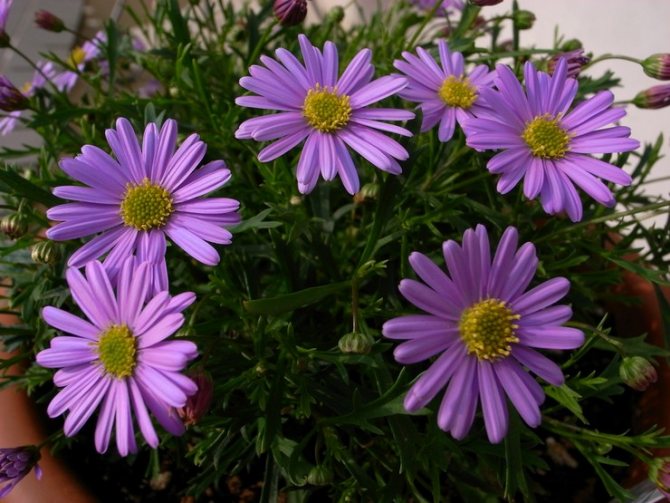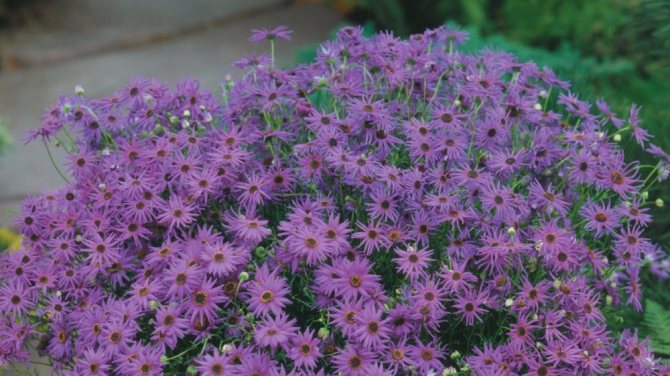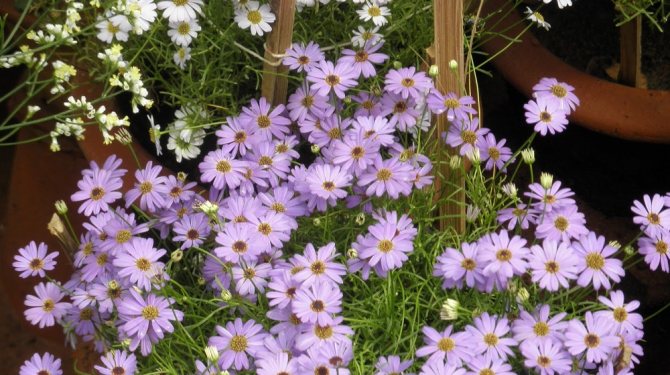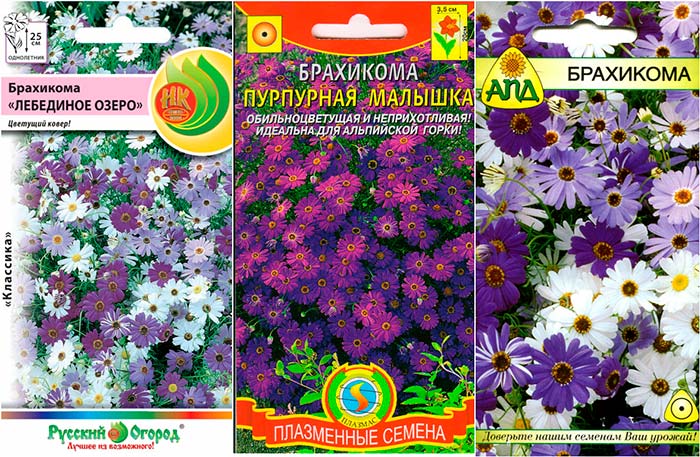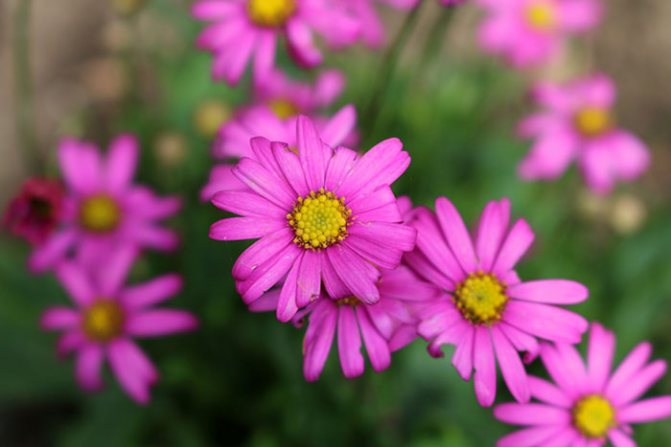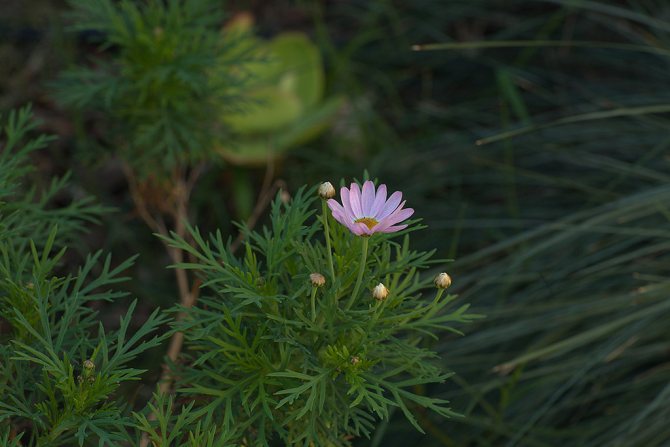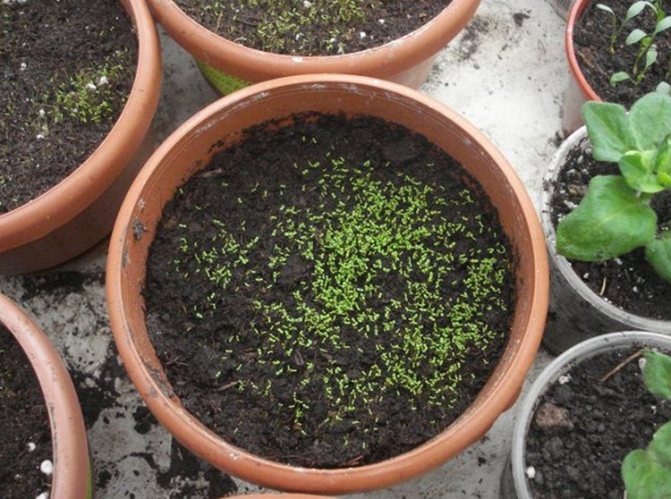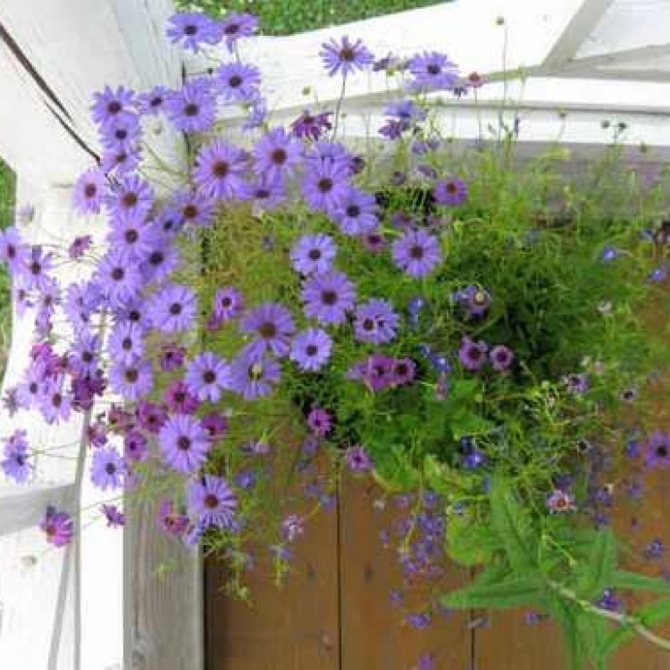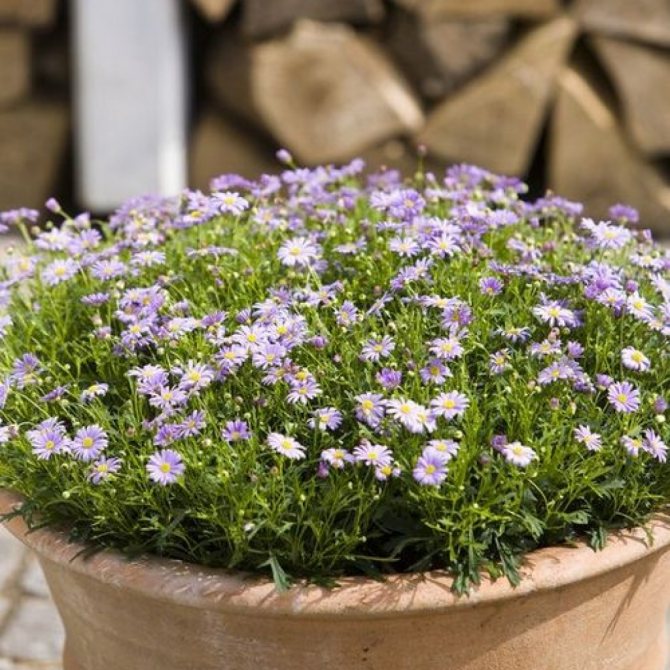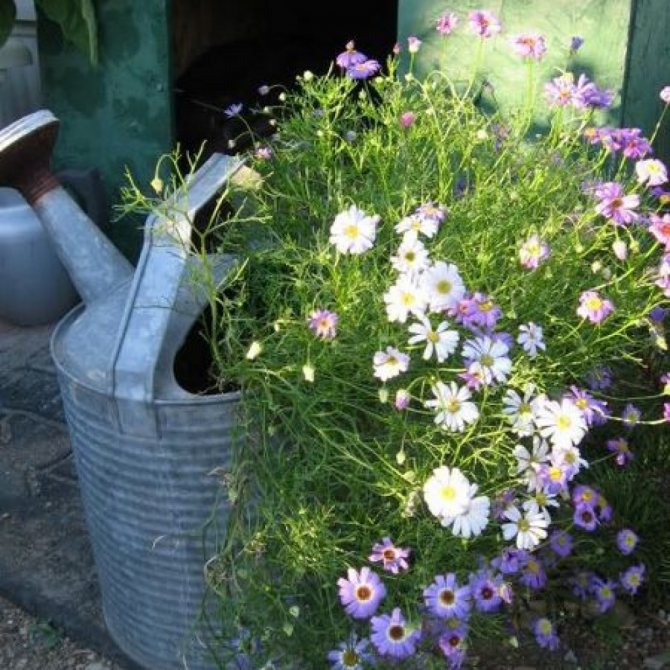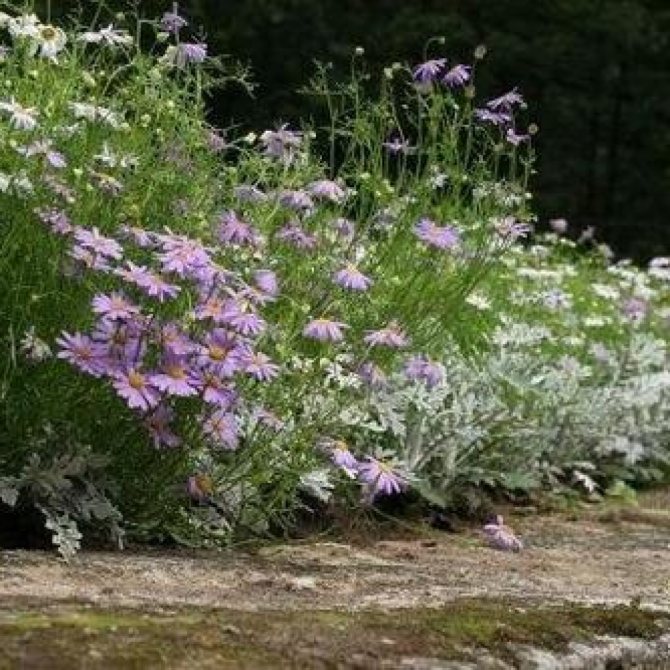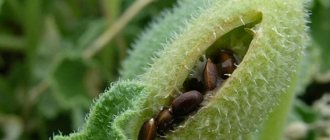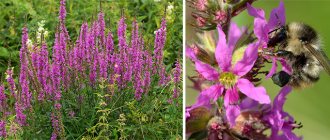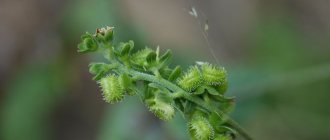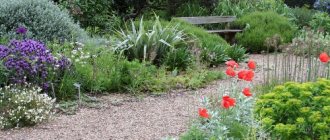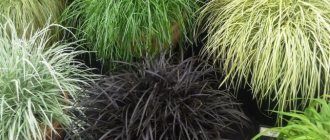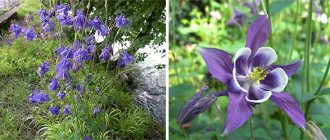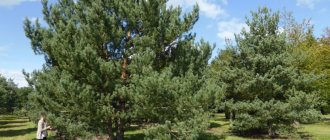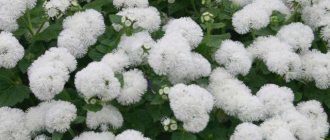Brachycomas are native to areas of the southern and western parts of the Australian continent, Tasmania and New Zealand. In total, there are about five dozen species of this culture, which can be both annual and perennial plants. Graceful and thin shoots cover leaves with a solid surface or heavily dissected. Basket-shaped inflorescences are located at the ends of the shoots one by one or several pieces in brush-type inflorescences.
Description of the plant
Brachikoma (Brachyscome) is a genus of plants that are part of the numerous Astrov family. There are about fifty species, although only one species is interesting from a decorative point of view - the Iberisoliferous brachycoma. Stems are erect, well-branched - up to 100 inflorescences per bush. The foliage is bright green, finely dissected. Openwork bushes have a height of 15 to 40 cm. It blooms from June to October. Flowers - small baskets, up to 3 cm. Range of cold colors: white, blue, blue, pink, lilac, violet.
The flowers have a delicate aroma.
The seeds ripen well in the middle lane, they can be stored for 2-3 years without losing germination, therefore, having bought a bag of seeds once, you can provide yourself with planting material for many years. Small seeds (1 gram - 600 pieces).
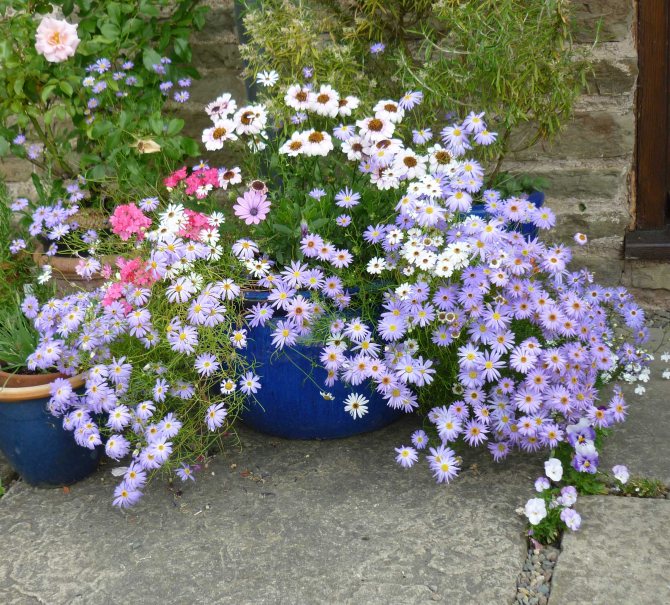
Propagation of brachicoma by cuttings
By nature, brachycoma is a perennial plant, and in regions with a mild climate, it can be left for the winter in open ground, with a small cover of spruce branches, peat or sawdust. In the middle lane, the plant is placed in room conditions for the winter. After a short period of dormancy, the brachycoma begins to bloom. In the spring, it can be planted again in the flower bed.
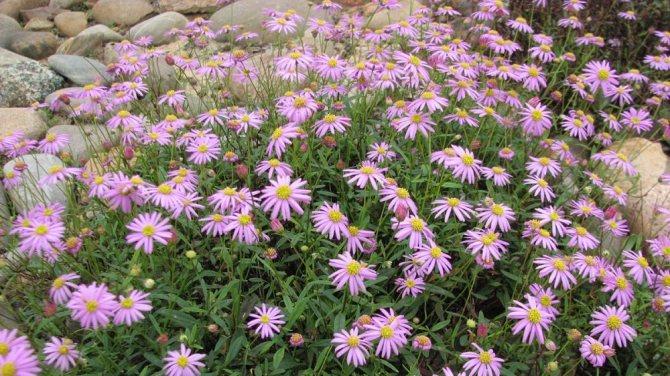

Brachicoma can be successfully propagated by cuttings
A brachicoma bush dug out for the winter can be used for plant propagation. You can increase the number of brachicoma bushes and preserve the most valuable plant varieties on your own plot by cuttings. This method is the only way to get new bushes from a plant grown from hybrid seeds.
For grafting, a mother bush is used, which is dug out of open ground in the fall and stored indoors in winter. Brachycoma hibernates in a bright, cool place. In the spring, the bush is cut into cuttings, which are rooted in containers with nutrient soil. A separate specimen is obtained from each cuttings, which can be planted in open ground at the end of May.
Brief historical information
The history of the flower began at the end of the 17th century - it was then that the British naturalist (and also a famous navigator and pirate) William Dampier, brought the plant to Europe from Australia. It is not known how this wild-growing chamomile captivated him (at that time the plant was not cultivated), but it interested the public and already in the 19th century was very widespread in European gardens.Then interest in the plant fell somewhat (plants come in and out of fashion - this is a natural process), but today it is again popular. Breeders also took an interest in it, although at the moment no cardinally new varieties have been obtained. Nevertheless, almost every domestic agricultural company produces brachicoma seeds, and they are readily available for sale.
Abroad, the plant has a very beautiful romantic name - Swan River daisy.
Disease and pest resistance and control
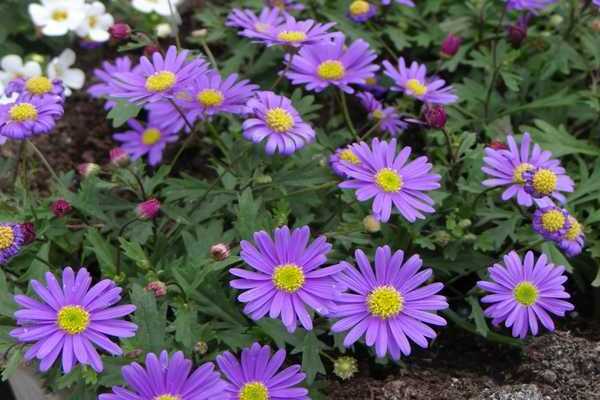

Brachikoma has strong immunity that protects the plant from various diseases and harmful insects. Nevertheless, at times you can face some difficulties.
Watering frequently and using too much liquid can lead to root and stem rot. It can also be triggered by rainy and damp summers. Brachycoma needs dry soil for good development, growth and good health, which is why it is very important to lay a drainage layer on the bottom of the pot or holes that prevents water from stagnating. At the initial stage of the development of rot, this problem can be dealt with. To do this, you need to transplant the plant into other holes with a drainage layer, and remove all damaged parts.
Snail - she loves to settle on a brachycoma and eat its leaves leaving holes of different sizes on them, by which it can be determined that they have settled on a flower. Manual collection of snails and their subsequent destruction will help to save the plant. In order to scare them away, you can use special products sold in all specialized stores and nurseries. But it is important to know that the use of chemicals can negatively affect the plant.  Having met a whitefly on a plant, you need to understand that this flying pest with white wings reproduces very quickly. The feces that it leaves on the surface of leaves and shoots corrodes them. Its larvae suck out all the juices from the plant. Especially often they can be found on plants grown at home. To combat them, you will need the use of chemicals. It should be noted that this pest is extremely rare on the brachycoma.
Types and varieties
In our latitudes, two species are cultivated:
Brachycoma Iberisolistnaya (Brachycome iberidifolia) - the most popular. A short, highly bushy plant native to Western Australia. It blooms very profusely, at the peak of flowering, the bushes are literally covered with medium-sized (4 cm) chamomile flowers. Lithuania is very beautiful (hence the name - Iberis-leaved) - deeply dissected, thin, beautiful green shade, light and delicate. The plant looks very harmonious - the combination of foliage and flowers is perfect.
Brachycoma multifida (Brachycome multifida) - the second most popular species. Its name is not so well known, but in gardens it is found no less often. Grows well on poor rocky soils. Has characteristic narrow lanceolate leaves. Flowers are slightly smaller than those of Iberis-leaved. The bush is just as low. Flowers of a delicate range: white, pink, pink with a lilac tint, very beautiful varieties with a slightly bluish color began to appear (variety "Mauve Deligth").
The most popular series and varieties of Iberisole brachycoma:
- "Bravo" - a series developed in Germany, includes 6 colors.
- “Magenta Deligth” is an unusual variety with a bright, fuchsia color, unexpected for a delicate brachicoma, but even such a catchy color still looks in the style of this plant - that is, without vulgarity.
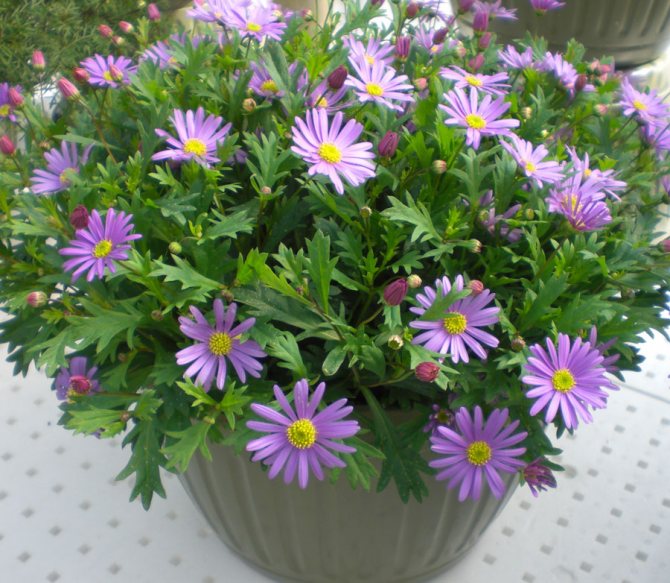

Compact variety Virginia Violet
Brachycoma care
Brachikoma is not a capricious lady, and therefore caring for her is minimal.
- Watering. Water the brachicoma without fanaticism - it loves dryish soils and will die if you flood it. But watering should be regular.
- Shine.A brachicoma spot is a sunny spot in your garden. No wonder she was born in hot Australia.
- Top dressing. You need to feed this plant only about 3 times over the whole summer: sprinkle the brachycomas around the stems with a small amount of wood ash, after watering the plant with some kind of universal fertilizer in a weak concentration.
- Bush formation. To make the brachycoma lush, pinch the top of the bush, then it will begin to branch strongly, and there will be a lot of inflorescences. By the way, if you cut off the fading shoots in time, then the brachikoma will be very grateful to you and will reward you with lush and abundant flowering.
- The soil. The soil in which the brachycoma "sits" should be loose and lush, so periodically loosen the soil around the plants, but not often.
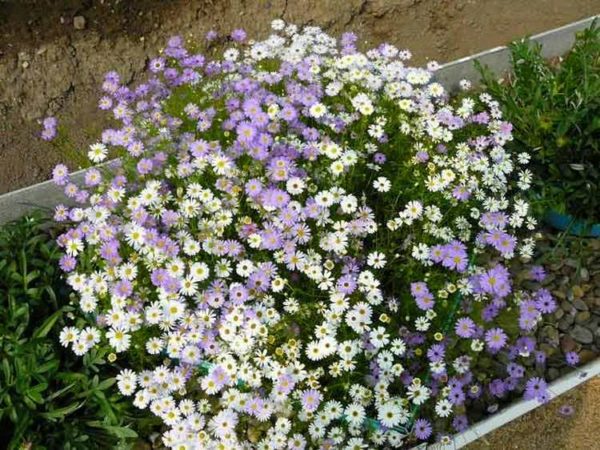

To make the brachycoma lush, pinch the top of the bush
In September, when it starts to get colder outside, brachicoma bushes can be transplanted into pots and taken into the house. Don't forget to collect the seeds: they will come in handy for next year!
By the way, if you sow brachycoma seeds in September or October and equip the plant with a nice and cozy place, then brachycoma will delight you with its flowering in winter. This is especially true for the owners of "winter gardens" or greenhouses.
Video - Cultivation of a brachicoma
Landing, choosing a place
In the wild, brachycoma is common in Australia, in arid and sunny regions, it is not surprising that the flower prefers well-lit areas and tolerates the absence of moisture well. The place should be well sheltered from the wind. The soil needs to be loose, air and moisture permeable, with a neutral Ph. On dense soils, the flower grows poorly, because it has a weak root system.
To fill the container for planting a brachicoma, a universal potting soil is suitable. Good drainage is a must.
Necessary conditions for growing
Brachikoma is a herb for open ground, generally unpretentious, but requires some consideration of the requirements for growing conditions. A feature of brachicoma is a weak, shallow root system, therefore, the main requirement for its cultivation is loose soil with low acidity.
The plant needs a nutritious soil, therefore, when planting, humus and a small amount of mineral fertilizers must be added to it. To prevent waterlogging, drainage from broken bricks, crushed stone, and fine gravel is added to the soil. Do not plant brachicoma in lowlands and places where moisture accumulates during rain.
The area for planting brachicoma should be as illuminated as possible throughout the day. In the shade, this light-loving plant will not produce abundant flowers. The second condition is protection from drafts and gusts of wind.
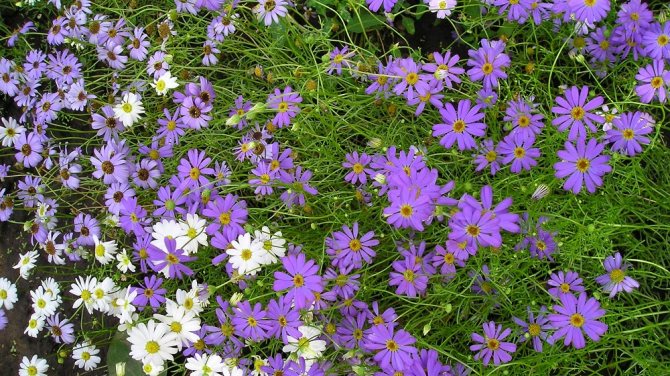

The plant needs a lot of sunlight for lush flowering.
Growing from seeds
Sowing dates - late February-early March. Flowering will come in 70-80 days (2.5 months). Sowing is carried out superficially, the seeds are simply pressed slightly against the soil, covered with glass, and placed on a warm windowsill. The soil can be pre-shed with a solution of potassium permanganate.
Seedlings appear in a week.
Picking
Brachicoma sprouts tolerate picking perfectly, although this is a jewelry operation. You can grow seedlings without picking - in this case, 2-3 plant seeds are sown in peat pots. Water gently, watering the seedlings from a spray bottle (stream position, not spray).
Transplant into open ground - at the end of May, by this time the seedlings may already have buds. Plants tolerate transplanting well. The distance between plants is 20 cm.
The plant reproduces well by self-sowing, which is why sometimes brachycoma is included in the lists of the most unpretentious perennials. Although, of course, hybrid varieties will not convey their traits.
Propagation by cuttings
Brachycoma in warm countries is a perennial, so nothing prevents the plant from preserving until spring, providing it with a suitable wintering. The plant is dug up, cut off, transferred to a cool and bright room, rarely watered, only so that it does not dry out. In winter, it will be possible to cut the cuttings and root them - this method of reproduction will allow you to get faster flowering plants, without the need to fiddle with seedlings and seeds.
Pinch seedlings 5 cm high, this ensures better branching and a beautiful spherical shape for the plant.
On sale you can often find varieties "Palermo" and "Swan Lake". Growing them is no different from growing any other varieties of brachicoma, you can safely follow the recommendations in this article.
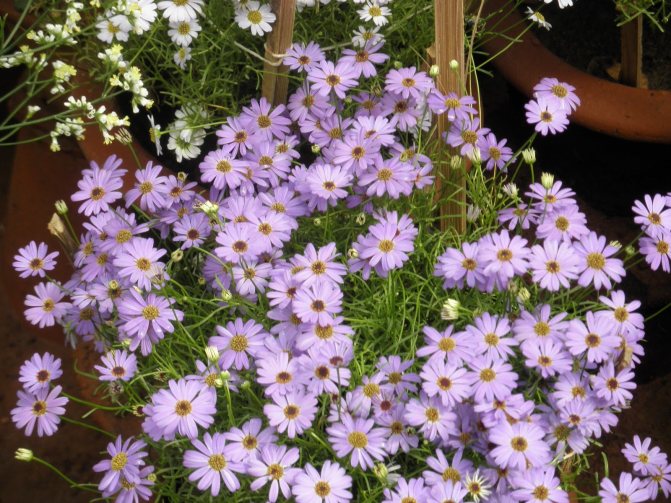

Growing seedlings of Brachikoma
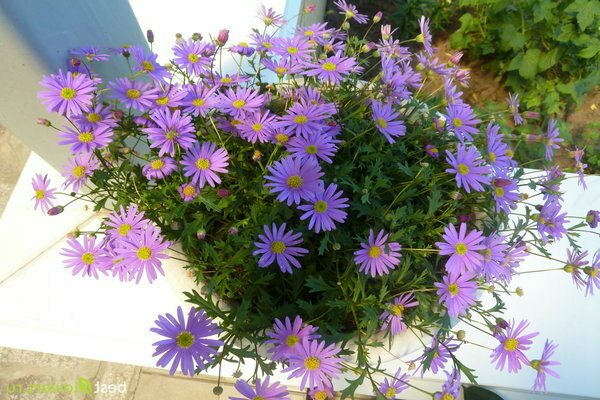

For growing seedlings, seeds can be sown in the last days of February or transferred to the first weeks of spring. Florists with extensive experience recommend this period of time for planting. The procedure will be as follows:
- The first step is to prepare a suitable earthen mixture for sowing seeds. The earth should be light and rich in nutrients. To make it such, you will need leafy earth, humus, sand and sod land in proportions of 1/2/1/3. Next, you need to add mineral fertilizers there and mix everything well.
- After that, you need to start choosing a suitable container. Small, flat containers are an excellent option.
- The container is filled with the prepared earthen mixture and watered.
- After that, small furrows are made
- Further, the seeds are evenly distributed along these furrows. When sowing seeds, you do not need to deepen or dig in them.
- At the end of sowing, the container is covered with foil or glass.
The containers must be placed in a room with a temperature of at least 18 degrees and not higher than 20, this will promote better germination of seed. The first seedlings can be seen in one week. After their appearance, the film must be removed.
After the appearance of two true sheet plates, a pick is carried out. This procedure is not harmful to these flowers, so there is no need to worry about any consequences after transplanting into individual pots.
The pick can be done in separate cups, or you can drop them into a large common container. If the latter option is chosen, then when planting, a distance of 5 centimeters should be left between the plants. Correct planting of seedlings is very important. Seedlings can be pry off with a small wooden spatula, removed from the ground, clean the roots from the soil. Next, you need to pinch the main root and plant a small plant in a container prepared for it, cover the roots with earth, tamp it with your hands and water using a spray bottle.
In order to grow a brachicoma, it does not take a lot of time or much labor. Timely watering is not frequent fertilization and this is all that is needed for the plant to please the beauty of its flowering for three or even more months. 
Diseases, pests, problems
The plant works well even with novice florists. Defeat by disease or disease is very rare. Sometimes damage by whitefly or snails is possible (it is enough to collect them by hand)
A flower planted in dense, too wet soil, with a tendency to stagnate water and acidity, will also grow poorly. Perhaps the plant will not be so lush in a very cold and rainy summer (at this time, watering should be minimized) - the stems of such plants rot, they shrink, and bloom poorly.
Possible difficulties and illnesses
Brachikoma is an unpretentious and hardy plant and is very rarely "attacked" by pests and diseases. But there are also some problems with the cultivation of this plant.
Decay of the stem or roots... The reason is excessive watering. This is especially true if the summer was rainy.Remember that brachycoma loves dryness, which is why we put drainage material under the bush. What can you do to save the plants? Just transplant them elsewhere and provide excellent drainage, and remove rotten stems.
Snail attacks... For some reason, garden snails are very fond of brachykoma. They gnaw through the leaves of the plant - by the characteristic holes you can find out that the flowers have been attacked by these gastropod parasites. What to do? Just collect all the snails found on the brachycoma bushes and throw them somewhere far away, or just kill them. Alternatively, plants can be sprayed with parasite-repelling agents found in florist shops. But remember that chemistry is not always good for plants.
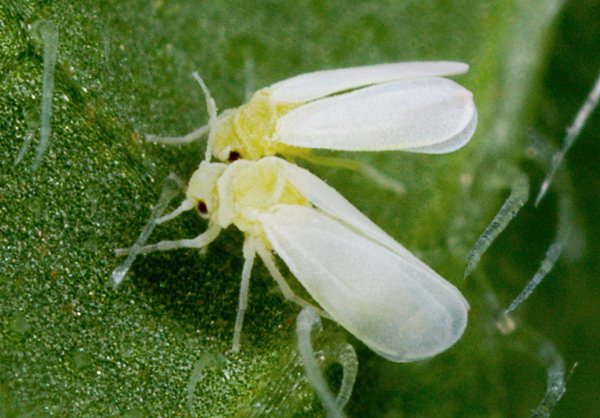

Whiteflies feed on plant sap
Whitefly lesion... The whitefly is an equal-winged flying insect with characteristic white wings (hence the name). The "parasite" reproduces very actively. It causes harm by leaving its feces on the plants, corroding the surface of the stems and leaves. Whitefly larvae feed on plant juices. Most of the houseplants are affected by these parasites. You will have to fight insects using chemicals. Fortunately, the whitefly rarely infects the brachicoma.
Application
This is an amazing container culture. Most often, it is planted in pots, containers, pots, on loggias and balconies, and they decorate the entrance to the house. In addition, the brachycoma will decorate:
- Flower beds.
- Alpine slide.
- Curbs.
The plant is easy to shape into a ball, which means this unassuming annual can look good in regular, park-like compositions.
Combined with:
- Petunia.
- Rudbeckia.
- Ursinia.
- Gaillardia.
- Coreopsis.
- Zinnias.
In general, any letniki with large and rough flowers will approach, a delicate cloud of brachicoma will set them off and accentuate the brightness of their colors.
Brachikoma on the balcony will be excellent companions to the same summer lovers who love the sun - petunia, verbena, ageratum, ampelous snapdragon, diastia, bindweed.
Brachycoma in landscape design
This unpretentious, flowering plant is perfect for retaining walls, alpine slides and rocky gardens. Low, highly branched, lush bushes hang gracefully from the stones, softening the sharp corners and covering the ground between them. Brachycoma also looks good in the foregrounds in flower beds, ridges and borders next to various plants. It can be mountain and Carpathian bells, armeria, yarrow, stonecrops, rock geranium and its varieties.
It should be said that this crop is excellent for growing in hanging pots, containers, as well as in various mobile vases and containers. It can be combined with pelargonium, marigold, dichondra, petunia, zinnia, tobacco and night violet.
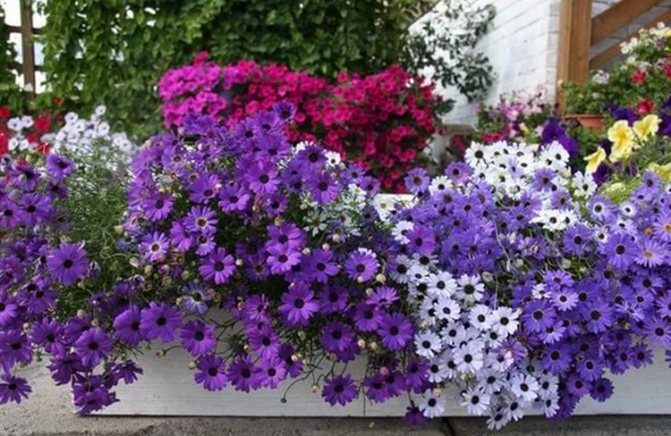

Growing
4 Secrets to Growing a Flower from Seed Correctly
At the end of February, experienced gardeners advise beginners to start seedlings, adhering to the following algorithm.
- A potting mix is prepared: Brachicoma seeds grow well in light soil enriched with nutrients. The mixture should contain leafy soil, sod and humus. To this composition, you need to add a little mineral fertilizer to fortify the soil. Mix thoroughly.
- Then you need to purchase small containers and fill them with the resulting mixture. Moisturize without sparing water.
- Pour seeds into shallow furrows without sprinkling the earth or deepening them.
- The top of the container is covered with polyethylene or glass.
The seeds grow well in a 20-degree room temperature. After 7 days, the first shoots will appear, which means it's time to remove the film. After the formation of 2 or 3 sheet plates, you can start picking them.Fears for transplanting plants are groundless: they can be safely divided into different containers for diving.
Better to use individual cups. If a large container is taken, it is recommended to maintain a 50 mm gap between seedlings. The shrub is removed from the ground using a garden spatula and in this way transplanted with the rhizome, from which the substrate is removed.
The main root is pinched, planted in a container, followed by tamping. It is advised to moisturize with a spray bottle. An interesting brachycoma, the planting of which does not cause difficulties, will respond with gratitude with a juicy gamut of colorful flowering. The manipulations do not end there.
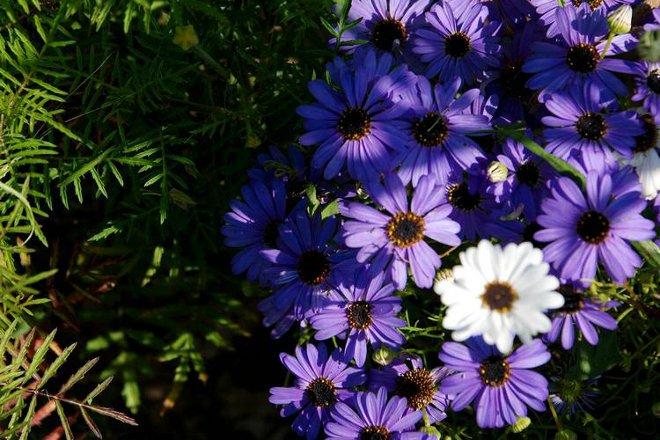

The wisdom of planting in soil conditions
A representative of the Compositae family will need tempering. With the first warming rays of the sun, it is time to take the seedling pots outside to strengthen the roots, get the plant accustomed to outdoor temperatures. Planting is carried out in open soil on May days, it is better to do this at the very end of the month.
For the new "newcomer" of the garden, a sunny meadow, carefully drained, is selected. Too wet soils are considered bad. How can this be done correctly? The bottom of the hole is formed by drainage material, for example, expanded clay.
A flower is carefully lowered into it, along with a rhizome and a lump of earth. Do not be surprised at the rapid growth - this is normal. A distance of up to 0.2 m should be observed between the bushes.
After waiting 12 weeks, the owner of the garden will be able to admire the first flowers. Sowing in pots is allowed to form original flower bed decorations. Residents of the southern regions are advised to do this work in May.
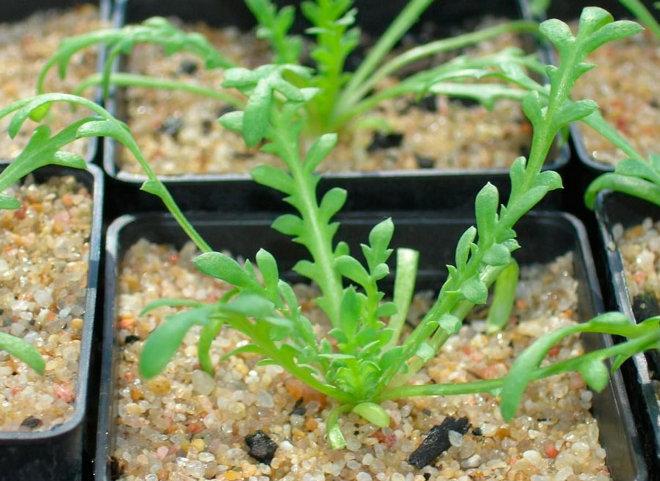

Care
The easy-to-maintain blooming brachicoma helps gardeners organize stylish landscaping.
Watering features
Diligence with watering will provoke rotting of the roots, the death of a green plant. The culture likes dry soil, the "sea" of solar radiation. Watering should be done in moderation.
Shine
The abundance of light will be beneficial for the disclosure of the potential inherent in the flower by nature: it is not for nothing that Australia is its homeland.
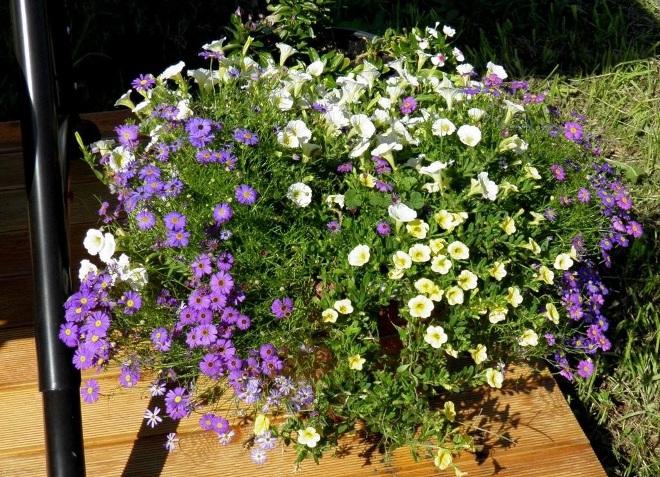

Top dressing
In summer, the gardener should take care of the plant by feeding. This must be done three times. Initially, watered with a weak solution of mineral fertilizer. Next, you need to sprinkle the ground with a thin layer of wood ash.
Chaos in landscape art interferes with perception, spoils the impression of the overall design picture, it is better to form a bush to see the generosity of flowering. For this purpose, the tip is pinched. To prolong the preservation of the flowering cap, you can remove the "worn out" inflorescences.
Features of soil conditions
Loose soil is the environment in which the plant feels comfortable. Periodic loosening promotes root development. Loosening too often will have a bad effect on the plant. In the "velvet season", you can dig out shrubs and bring them in pots for wintering: the house will be filled with the atmosphere of summer, raising people's spirits.
You can collect seeds, which are planted in boxes and watch the flowering in winter. The culture has a non-capricious character, it gets along well in greenhouses, winter gardens. Some gardeners have to deal with problems and pests.
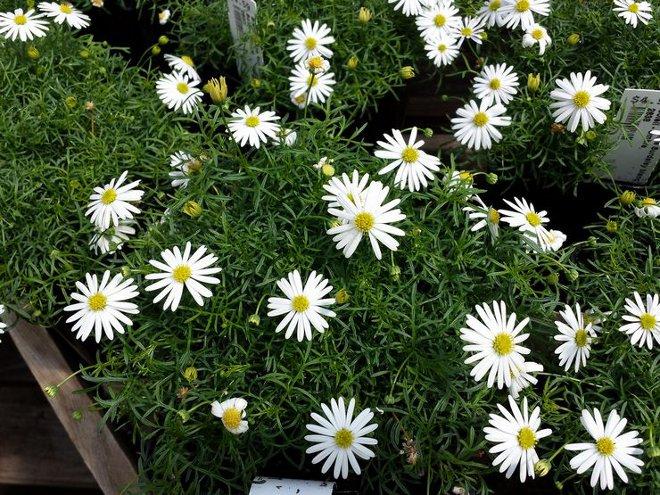

Diseases and pests
When the soil is waterlogged, the culture may develop root rot. If the gardener noticed the wilting of the culture for no apparent reason, he needs to dig up the diseased bush, cut off the decayed roots, rinse the root system in a weak solution of manganese, treat the cuts with charcoal and transplant into a new planting pit. It will take about a month to acclimatize and recover.
Also, the plant can be attacked by whiteflies and snails. The snails are collected from the bushes by hand, and the treatment of plants with the Actellic insecticide diluted according to the instructions on the package will help to destroy the whitefly.
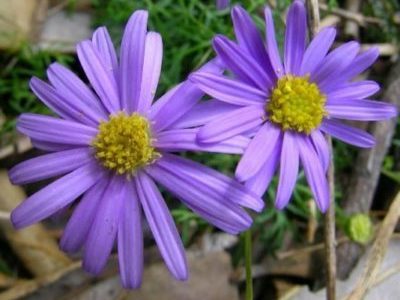

How to care for a plant?
The plant is very easy to care for, it is unpretentious, so even a beginner in gardening can handle the cultivation.
Throughout the summer period, flowers must be fertilized with a liquid mineral composition no more than 3 times.
Also, the bushes can be sprinkled with wood ash.
Watering is performed only when it is very dry, it is hot, and then very carefully, since the brachycoma does not tolerate waterlogged soils.
Pinching will have a positive effect:
- branching of the stem part will intensify;
- the decorative qualities of the bush will increase;
- many inflorescences will form.
Also, we must not forget about garden pests, for example, slugs adore the foliage of brachycomas. There have also been cases of flowers being attacked by whiteflies.
In addition to watering and feeding, weed grass should be weeded and the soil around the bushes should be slightly loosened.
Brachicoma flower - description
Chamomile brachikoma is a graceful, highly branched, usually an annual plant up to 25 cm high with bright green, alternate, small, linear, whole or openwork leaves dissected into narrow pinnate lobes. Small baskets with a delicate pleasant aroma, single or collected in racemose inflorescences, consist of disc-forming yellow, blue or dark brown tubular median flowers and surrounding this disc in one or two rows of white, pink, lilac, blue, purple or blue ligulate flowers ... The fruit of the brachicoma is a wedge-shaped achene with a forelock of bristles.
The order of sowing brachicoma seeds
A common way of growing brachycoma is sowing seeds, because in winter the plant dies and there is no way to get shoots.
It is recommended to sow seeds, observing a certain sequence:
- Prepare the soil for sowing in advance. You can buy it at a specialty store or make it yourself. You need to know: it should be light and fertile. It should include turf, sand, leafy earth, humus and mineral fertilizers.
- Prepare a shallow container. It must be filled with prepared soil, moistened with a spray bottle.
- Draw small grooves and sprinkle the seeds evenly. They cannot be covered with earth and deepened.
- Cover with foil and put in a warm place.
Brachycoma Iberisoliferous
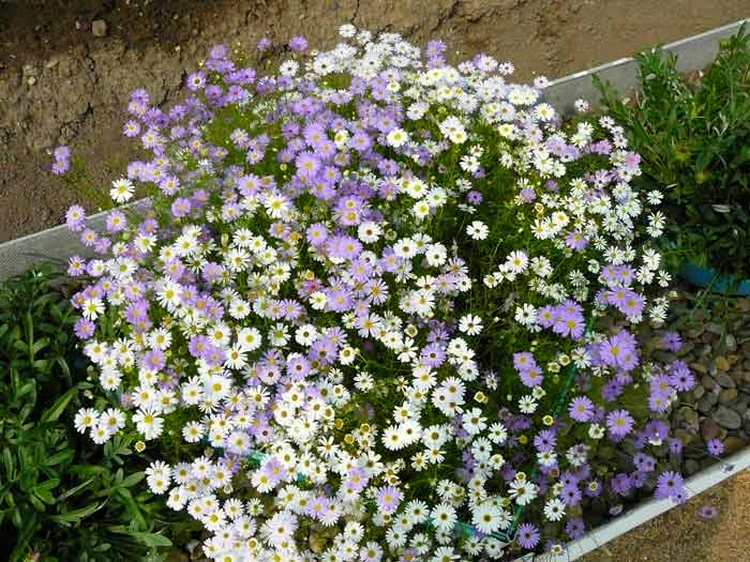

Of all the species of this culture in our country, only Brachikoma Iberisolistnaya and its varieties are grown. This species is an annual low plant, reaching a height of 15 to 25 cm. The bush is formed by highly branched herbaceous shoots, which are covered with green leaves with a slight grayish tint. They are located on the shoots one after the other (alternately). Each sheet is divided into several narrow and elongated sections.
Each small inflorescence - a basket (with a diameter of 2.5 to 3 cm) consists of two types of flowers: reed and tubular. The ligulate flowers of blue, white, purple, pinkish-lilac shades are arranged in one row around a round center, which consists of a large number of tubular flowers, the colors of which can be yellow, brownish, blue or almost black.
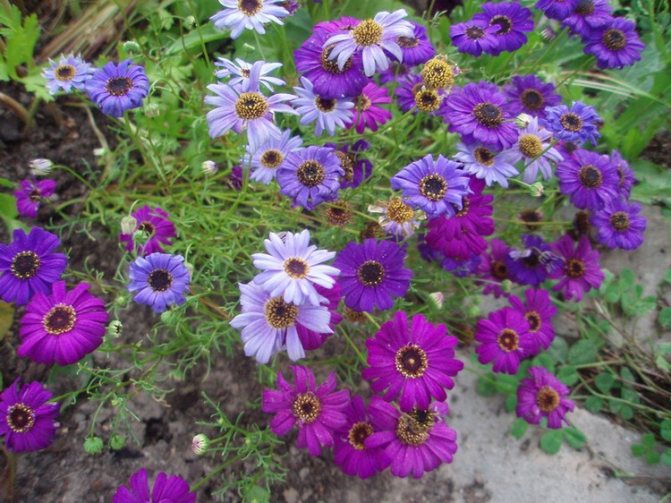

Flowering begins in mid-June and lasts up to 3 months, depending on the variety. But the most decorative period, when the flowers completely cover the entire plant, lasts from 3 to 4 weeks. After that, the number of flowers is gradually reduced. Ripe small seeds are ready for harvest in September. They perfectly retain their germination for 2-3 years, subject to storage rules.
The most famous and popular varieties of brachycoma Iberisoliferous:
- Brachikoma "Blue sissy" attracts attention with light pale blue inflorescences with a yellowish center, which stand out against the green background of openwork leaves.
- Brachikoma "Swan Lake" is a mixture of plants with pink-lilac, blue, white and bluish inflorescences and yellow, brown and black centers. Lush shrubs of this variety reach a height of about 25 cm and quickly form a continuous flower cover.
- Brachikoma "Purple Baby" attracts attention with original violet-bluish inflorescences with a dark center and white edging. Annual graceful loose plants will decorate the flower bed, rabatka and front garden in front of the house for several summer months.
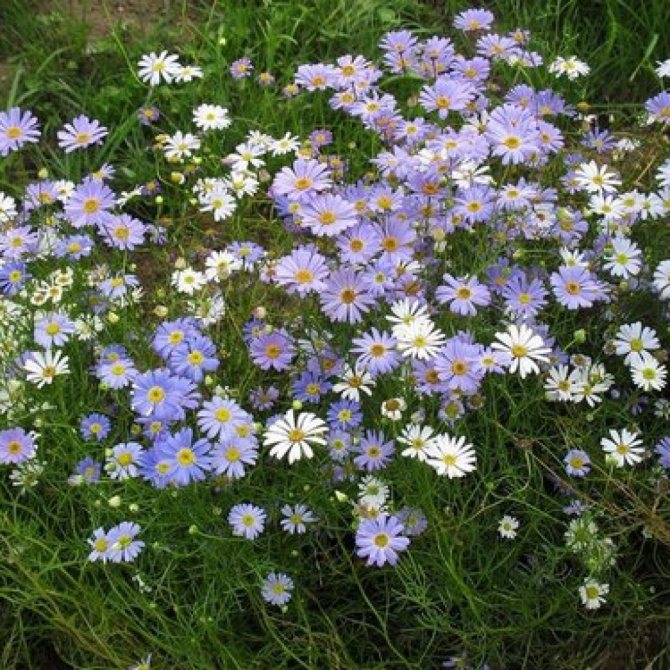

Brachikoma Iberisoliferous "Blue Sissy"
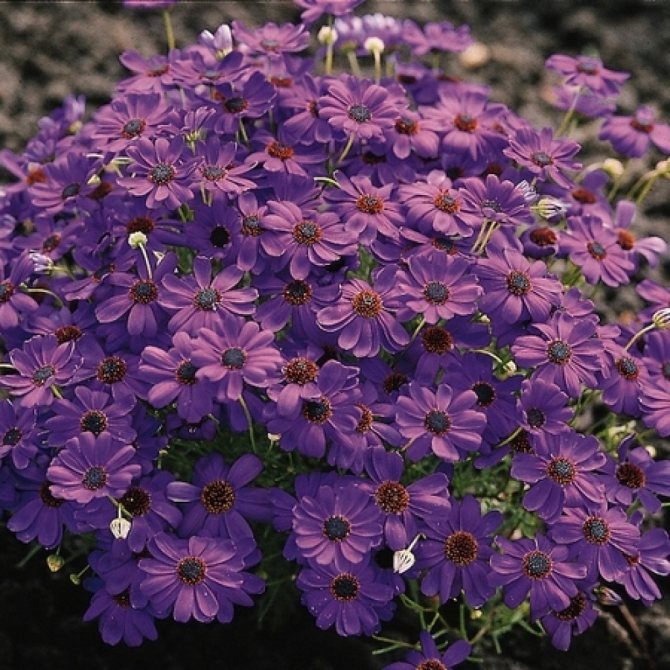

Brachikoma Iberisoliferous "Purple baby"
- Brachikoma "Blue baby" is distinguished by two colors of flowers. It is especially interesting that in blue inflorescences the center is colored blue-black, and in blue-lilac it is yellowish brown. This combination looks interesting and original.
Content
- Brachycoma species and varieties
- Brachycoma planting and care in the open field
- Soil for brachicoma
- Watering the brachicoma
- Fertilizer for brachycoma
- Flowering brachicoma
- Brachycoma pruning
- Brachicoma transplant
- Preparing a brachicoma for winter
- Brachycoma cultivation from seed
- Brachycoma propagation by cuttings
- Diseases and pests
- Conclusion
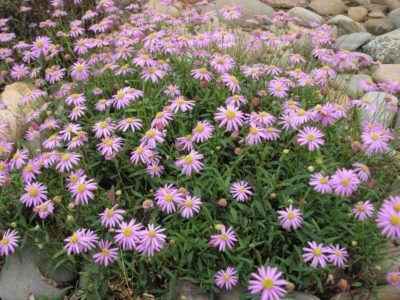

Landing in open ground
This is a thermophilic plant, therefore, it is planted in open soil after warm weather has settled on the street.
So that everything goes perfectly and not a single sprout dies, shortly before transplanting it is tamed to fresh air, taking it outside for several hours during the day. Usually, a transplant is done in May or early June, the main thing is that, according to the forecast, there is no frost.
And you need to have time to make a transplant before the first flowers appear, which begin to bloom two months after planting the seeds. It is not scary if the first flowers appeared already at the time of transplantation. It can be transplanted both into open ground and into street flower beds.
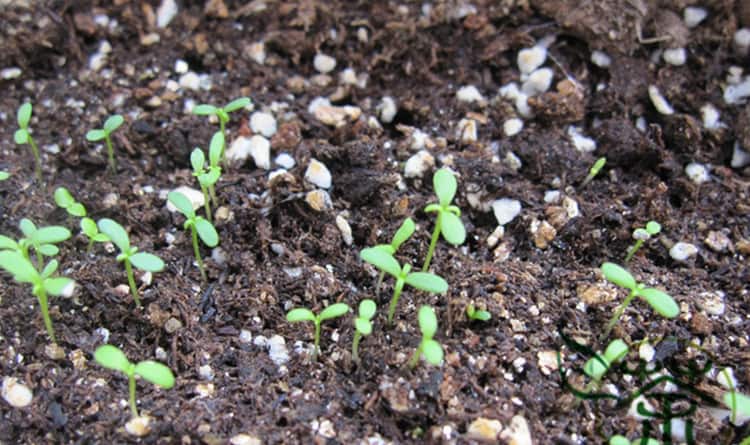

The distance between the shoots should be at least 30 cm, as they grow strongly and in cramped conditions they will not look very decorative.
The bottom of the soil must be drained, since the flower does not tolerate excess moisture in the earth. The soil itself should be neutral in acidity. They are planted shallowly and with the earth from the pot, trying not to ground the root collar.
Choosing Brachicoma Varieties
The genus "Brachikoma" unites about 50 plant species. But one species is best known to gardeners - this is Iberisole brachycoma. It was on the basis of this species that many varieties of brachicoma were created, the seeds of which can now be found in stores.
VarietyPhotoDescription
| Bluestar | Brachikoma, which curls and blooms with bright blue inflorescences - it is not for nothing that its name is translated from English as "blue star". Grows well and looks great in hanging planters and pots |
| Bravo mixed | Curly tricolor brachycoma, which, like Blue Star, is grown in hanging pots. It is a variety that blooms with blue, lilac, white or pink flowers. |
| Summer skies | Produces flowers in delicate pastel colors. It is noteworthy that there are about 5000 of them in 1 gram of seeds! The name is translated from English as "summer heaven" |
| Purple splendour | Popular variety. Deep purple flowers form complex inflorescences. The diameter of the basket is about 3 cm.Suitable for decorating borders and planting in pots |
| Waltz | Brachikoma, creating delicate compositions of pink, lilac and blue flowers with a dark center. A winning option for decorating your garden |
You can choose a variety, boldly focusing on your preferences regarding the color scheme: brachicoma is a very unpretentious and not demanding plant, and therefore you can cope with the cultivation of any variety of this charm.
What are the easiest garden flowers to grow from seeds?
The video below tells about sowing crops that will not require any trouble from gardeners with growing seedlings: brachycoma, scabiosa, cornflower.The program "Advice of Aunt Tanya" of the TVK TV company.
Fantastic salpiglossis - growing one of the most piquant flowers
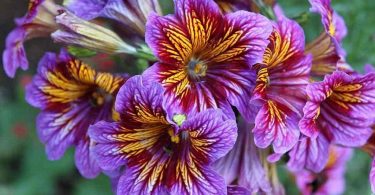

Brovallia: how to grow a spectacular annual from seeds
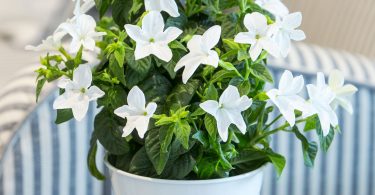

Flowering brachicoma
The plant blooms from June to the end of October. Inflorescences are medium, basket-like with ligulate petals with a yellow or dark core. The colors can vary from white, blue and purple, to orange, red and yellow, depending on the variety.
After the flowering of the inflorescences, seeds are formed, which are used by gardeners to propagate the brachicoma.
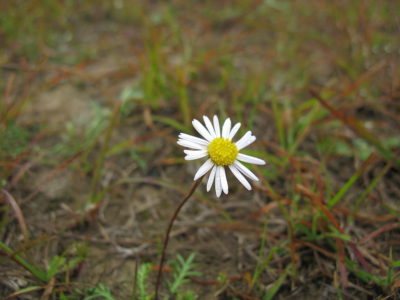

Planting and leaving
For brachicoma Iberisolis and its varieties, only perfectly illuminated areas with permeable, moderately moist, nutritious lands with a sufficient sand content are chosen. The place of permanent cultivation should not be excessively moist. And also the site must be protected from strong winds and constant air currents.
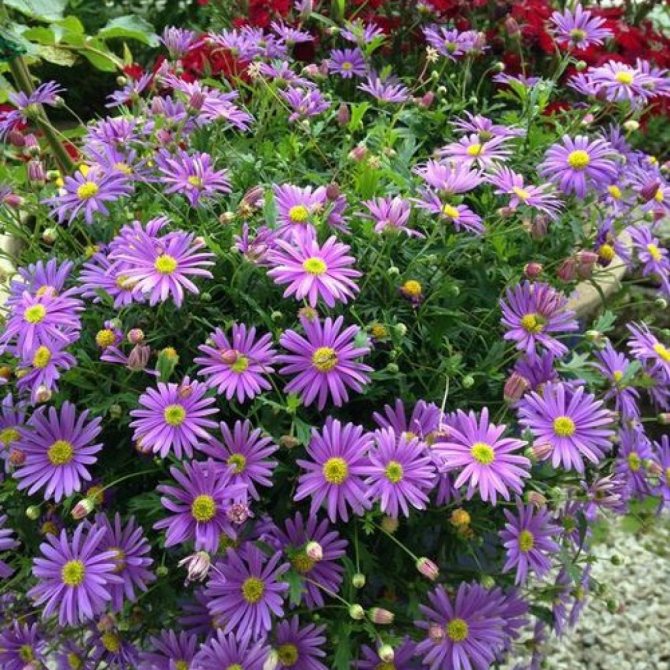

The place for growing must be dug up to a depth of 20-25 cm and carefully leveled. Plants are planted so that there is 15 to 20 cm between them. Brachikoma grows rather quickly and forms a continuous carpet of shoots and flowers.
Caring for this culture does not require any special knowledge or effort. Watering plants is carried out infrequently, as the soil dries out. In the middle zone of our country, it is needed only in hot and dry times. In the southern regions, watering should be regular, since a strong lack of moisture reduces the flowering time and its splendor. It is worth remembering that severe drying out of the soil can lead to the death of the brachicoma.
To maintain abundant flowering, the bushes are pruned and the cuttings are used for rooting. Cut off parts of shoots 8-12 cm long easily form roots in a short time in sandy soil.
Brachikoma Iberisoliferous is practically not affected by any diseases and pests. Powdery mildew can appear only in years with strong temperature fluctuations in hot weather, the fight against which can be found here.
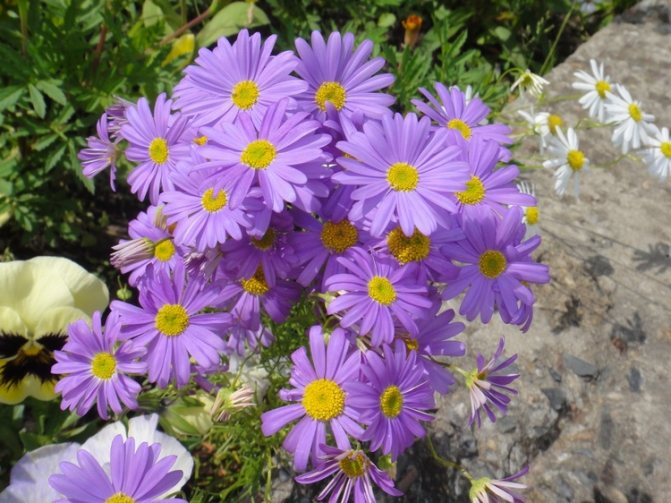

To combat this disease, fungicides are suitable: "Skor", "Topaz", "Topsin" and others. You can also use biofungicides: "Fitosporin-S", "Planriz". Prevention of this disease is the correct cultivation technology, which includes fertilizing with phosphorus and potassium fertilizers. Such feeding increases the resistance of plants to diseases.
Sometimes this species attracts the attention of snails, which feed on leaves with great pleasure. For the destruction of these pests, garlic or mustard infusion is used, as well as the preparations "Thunder" and "Thunderstorm".
Further care
Even during a drought, the brachycoma does not fade, although it is in the sun. It grows rather quickly after rains and watering.
The plant does not tolerate high humidity, as it leads to the formation of root rot, therefore, it is necessary to water the flowers only after the soil on the surface has dried.
After watering, it is recommended:
- loosen the soil, remove weeds;
- be sure to feed the plant with mineral fertilizers, it is better not to use organic fertilizers;
- when the flowers fade, it is necessary to remove them, this action will stimulate the appearance of new buds;
- ripe seeds should be slightly dried and stored. They have time to ripen in a season, so it will be possible to sow brachicoma every year.
Brachycoma native to warm Australia in the south can grow up to 3 years, but in temperate climates it is considered an annual and does not tolerate frosty winters. This plant will become a real decoration of any flower garden.

